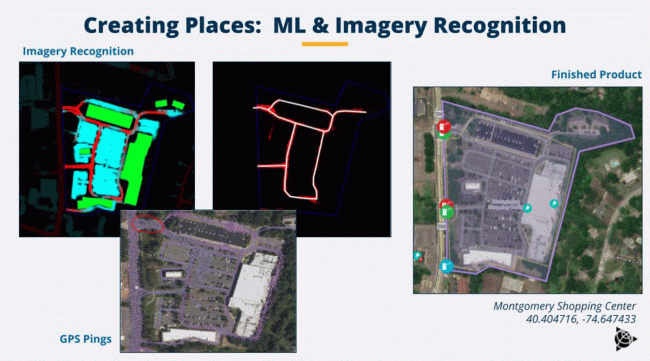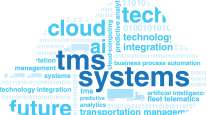AI Provides Vital Assistance to TMS Companies

[Stay on top of transportation news: Get TTNews in your inbox.]
The incorporation of artificial intelligence in transportation management systems is changing how the systems work and how trucking companies and their partners use them to enhance efficiency and reduce costs, technology vendors said. They also contend that AI also offers predictive capabilities that can help carriers and partners identify potential revenue streams and profit opportunities.
One of the most compelling advantages is the reduction of empty miles in the supply chain, said MercuryGate Chief Innovation Officer Steve Blough, who is also a co-founder of the company. “AI gives shippers and their partners the ability to stop moving ‘air’ on the highway,” which also helps reduce carbon emissions, he said. “AI is used to determine which shippers’ freight aligns best with the trucking company’s desired lanes and minimizes empty movements by determining another shipper that aligns with the empty leg.”
AI and machine-learning models can be trained to support decisions and automate processes. McLeod Software is working on models to enhance its capabilities for freight rating, carrier payment, EDI tender acceptance, planning and scheduling, and driver matching, said Jonathan May, McLeod Software’s director of business intelligence. The initial investment in AI — for hardware, software, and labor — “can be high, but efficiency gains and cost savings are the ROI,” May said. The TMS vendor is incorporating a chatbot, built upon an OpenAI API from Microsoft Virtual Agents, into pricing, lane, and rate analysis products.
McLeod Software has integrated truckload optimization solutions provided by Manhattan Associates and Optimal Dynamics into its TMS, noted Robert Brothers, vice president of product development. Users can take advantage of the optimization recommendations from those products in their “normal, role-based workflow without having to exit our system,” Brothers said, adding that “real-time traffic input is certainly on the horizon.”
Tai Software built an AI mechanism into its TMS to manage email — read it, respond to it, and, if it relates to a shipment, link it to the shipment, notify staff, and generate a response that can be held till someone approves it for sending. Using natural language processing, the TMS can create a shipment “from anything a user sends,” said Walter Mitchell, CEO of Tai Software. Natural language processing is a branch of AI that enables computers to understand text and speech.

Guy Broderick of Kriska shares how he successfully combined data reports and a simple understanding of human nature to become one of the best driver coaches in North America. Tune in above or by going to RoadSigns.ttnews.com.
A shipper might send an email wanting to create a shipment from “my warehouse,” Mitchell said. Based on the source of the email and the words “my warehouse,” the language processing tool identifies the customer. “We know information about them, and we can use AI to predict what the shipment looks like,” Mitchell said. Tai’s system creates a shipment, generates a quote, and then notifies staff that the quote is ready to be reviewed. “You can have a quote response in literally minutes,” he explained.
Most TMS providers agree that the introduction of ChatGPT by OpenAI, an AI company, is enabling creation of AI and machine-learning products. ChatGPT is what’s known as “a large language model,” designed to predict the next word in a sequence, allowing for increasingly automated communications between systems.
Tai Software integrated Parade, an AI-powered freight capacity management platform, into its TMS. Tai also integrated greenscreens.ai, another tool with AI functionality. Mitchell said greenscreens.ai helps with pricing generation. It enables the leveraging of pricing data within the TMS while booking and managing freight, Mitchell said.
Concept Logistics implemented Tai Software’s system more than three years ago and is making use of those integrated AI tools, said Greg Finnerty, Concept’s vice president of operations. Finnerty said the logistics company has grown its carrier network in that time. “Parade and Tai help us realize where we’re utilizing our carriers better,” Finnerty said, enabling Concept to provide increased consistency of loads, for example.
Chris Orban, vice president of data science at Trimble highlighted the importance of defining AI to mean “a computer algorithm that uses a large amount of data.”

Orban
“I think that’s very appropriate for our industry. There are so many human elements that it’s hard to just allow a computer to do all the ‘work,’” he said. “You need to have a little of that human element, still, in the decision-making.”
Orban added that AI is immensely powerful, and the computers can certainly look at a far larger quantity of data in far less time than any human brain can. Trimble’s technology can pull in precise routing and ETA calculations, factoring in weather and traffic conditions in real time from external sources, he said.
Orban warned that one of the shortcomings is that “computers do a very bad job of predicting or learning something that has not happened before.” He cited the COVID-19 pandemic and the resulting turmoil in the supply chain. When states shut down their rest areas for public health reasons, truck drivers were without those locations to stop and rest. In such cases, algorithms for predictive solutions couldn’t help. “You can’t train a computer to solve a problem that has never been seen before,” Orban said. “That’s a key limitation.”

McLeod dispatchers. McLeod can alert customers of specific data integrity problems and is able to set default values where data is missing. (McLeod Software)
Another of the challenges is ensuring clean, accurate data, technology vendors said.
“Data integrity begins with the user,” May said. “We can curate and cleanse the data we use for our models. We can also impute missing values based on similarity scores and other logic.” McLeod alerts customers of specific data integrity problems that can inhibit decision-making, and it sets default values where data elements are missing, he added. “We are also looking to have more drop-down, menu-driven data points in the system as opposed to free-form fields,” he said. “It is helpful to use standardized data tables for things instead of free-form data fields, which can create lots of ‘noise’ or variability in the data.” Presenting clear information in context and at the right point in a user’s workflow is critical, May noted.
Trust is another challenge when it comes to a “system-generated” output, he said. “[Customers ask], ‘Should I trust this number or follow this suggestion the system is presenting to me?’” May said. “To build trust, it’s important to provide feedback on how the model, or the advice it gave, actually performed” in real-world scenarios, he said.
A number of TMS providers use DDC FPO technology to help ensure clean, accurate data.
DDC FPO specializes in business process management, processing data on freight bills for carriers, for example, with either a team of agents or using its AI solution, said Madison Conway, global marketing director at DDC Group. “More times than not, we have an integration with the TMS” being used by a carrier or logistics company, she said. “We have tens of thousands of bill of lading templates in our database,” Conway noted.

Conway
The company’s AI-based data capture software, DDC Intelligence, matches incoming BOLs to templates in the database or learns it as a new template and saves it. The next time such a template arrives, “it can process straight through, completely hands-free,” Conway said. The result is more accurate data for invoices, which can be submitted to the shipper “faster for faster payment,” she said.
Ben Wiesen, president of Carrier Logistics Inc., a provider of transportation management software for LTL carriers, said the industry is looking to AI and machine learning to address routing and sequencing and, in addition, staffing problems. “Maybe one person is able to handle three terminals because the computers are helping them so much [by taking on more decision-making],” he said.
For the most part, computer systems in the LTL segment have done “a great job of the initial planning,” Wiesen said, meaning optimizing pickups and the best way to execute them. “What the computers have not done a good job on is reacting to the changed conditions on the ground,” he said.
CLI is working on applying AI to look at all the trucks in an LTL fleet and suggesting how to save, say, 6 miles by reallocating one pickup to a different route.
“It takes a lot of data analysis to make that decision,” Wiesen noted, because all the trucks, pending pickups and conditions on the ground must be monitored.
Want more news? Listen to today's daily briefing below or go here for more info:




